LAB FINAL EXAM
5.0(1)
Card Sorting
1/48
Earn XP
Description and Tags
Study Analytics
Name | Mastery | Learn | Test | Matching | Spaced |
|---|
No study sessions yet.
49 Terms
1
New cards
Allele
- one of two variants of a gene.
• we are diploid, so 2 alleles per genotype in each human
• Alleles can be dominant or recessive
• Ex.) hair color, flower petal color, etc
• we are diploid, so 2 alleles per genotype in each human
• Alleles can be dominant or recessive
• Ex.) hair color, flower petal color, etc
2
New cards
Allele frequency
- the frequency of an allele in a given population
• Example population, n=4: Dd, dd, DD, dd
• d allele frequency= 5/8= = 0.625= 62.5%
• Example population, n=4: Dd, dd, DD, dd
• d allele frequency= 5/8= = 0.625= 62.5%
3
New cards
Genotype
the particular combination of alleles for a particular gene or locus, for a trait (like hair color)
4
New cards
Phenotype
the observable expression of a trait
5
New cards
Heterozygous genotype
Having 2 different alleles of a gene example: Dd
6
New cards
Homozygous recessive genotype
having two recessive alleles of a gene, dd
7
New cards
Homozygous dominant genotype
having two dominant alleles of a gene, DD
8
New cards
Hardy Weinberg Equilibrium
The principle of genetic equilibrium.
• Examines gene frequencies in a model population
• It shows us what allele frequencies we would expect if NO evolution was occurring.
- Therefore it can help us detect evolution by comparison.
• It relies on several assumptions of population normality.
• Examines gene frequencies in a model population
• It shows us what allele frequencies we would expect if NO evolution was occurring.
- Therefore it can help us detect evolution by comparison.
• It relies on several assumptions of population normality.
9
New cards
Hardy-Weinberg Equilibrium Assumptions
1. Large population
2. Random Mating
3. No natural selection
4. No mutation
5. No migration
2. Random Mating
3. No natural selection
4. No mutation
5. No migration
10
New cards
Hardy Weinberg Principle
• Relies on random mating, a large population, no immigration
or emigration, no natural/sexual selection, and no mutations.
• The purpose is to look at the model population and see how
frequently genes evolve. Then we can use that information to
look deeper into non-ideal populations.
or emigration, no natural/sexual selection, and no mutations.
• The purpose is to look at the model population and see how
frequently genes evolve. Then we can use that information to
look deeper into non-ideal populations.
11
New cards
What is Hardy-Weinburg testing for?
Microevolution: a change in allele frequencies ( of 1 gene)
that occurs over time within a population.
that occurs over time within a population.
12
New cards
Hardy Weinberg Calculations
Allele frequencies:
p = frequency of dominant allele
q = frequency of recessive allele
p+q=1
Genotype frequencies:
p2= frequency of homozygous dominant
q2= frequency of homozygous recessive
2pq= frequency of heterozygous
p2+2pq+q2=1
p = frequency of dominant allele
q = frequency of recessive allele
p+q=1
Genotype frequencies:
p2= frequency of homozygous dominant
q2= frequency of homozygous recessive
2pq= frequency of heterozygous
p2+2pq+q2=1
13
New cards
Blood type
refers to which (if any) microscopic sugars,or antigens, a person
has attached to the surface of their red blood cells
has attached to the surface of their red blood cells
14
New cards
Antigens
- these microscopic sugar markers, or sugar tags, are attached to the outside of your blood cells.
- A different blood type signifies a different kind of sugar tag your genes code for
- A different blood type signifies a different kind of sugar tag your genes code for
15
New cards
4 Varieties of ABO-Type Antigens: A, B, AB, O
• Type A: has N-Actylgalactosamine (A- antigen) to red blood cell surface protein. (codominant with B)
• Type B: has galactose (B-antigen) to red blood cell surface.
• Type O: has no sugar to red blood cell surface protein.
• Type B: has galactose (B-antigen) to red blood cell surface.
• Type O: has no sugar to red blood cell surface protein.
16
New cards
The antigens that appear on YOUR red blood cells tell your immune system...
which cells belong to you, and which are foreign invaders that need to be attacked.
17
New cards
Rh factors are a...
• a clotting antigen that may or may not be present on RBCs
• People with the Rh-factor have positive (+) blood
• People without the Rh-Factor have negative (-) blood
• People with the Rh-factor have positive (+) blood
• People without the Rh-Factor have negative (-) blood
18
New cards
A combination of your ABO antigens and Rh-factor antigens determine your...
full blood type
19
New cards
Antibody
- a protein produced by blood cells that can bind to a
specific part of an antigen, tagging it for removal by the
immune system
specific part of an antigen, tagging it for removal by the
immune system
20
New cards
Why Clotting Happens with Blood Transfusions (gone wrong)
• The body produces antibodies as a defense against foreign proteins such as viruses. They hang out in your blood plasma.
• If you receive a blood transfusion from someone who has antigens that you don’t have, the body will create antibodies against the foreign antigen, and it will cause severe clotting (agglutination).
• If you receive a blood transfusion from someone who has antigens that you don’t have, the body will create antibodies against the foreign antigen, and it will cause severe clotting (agglutination).
21
New cards
O is
the universal donor
22
New cards
AB+ is
the universal recipient
23
New cards
Reading a blood test
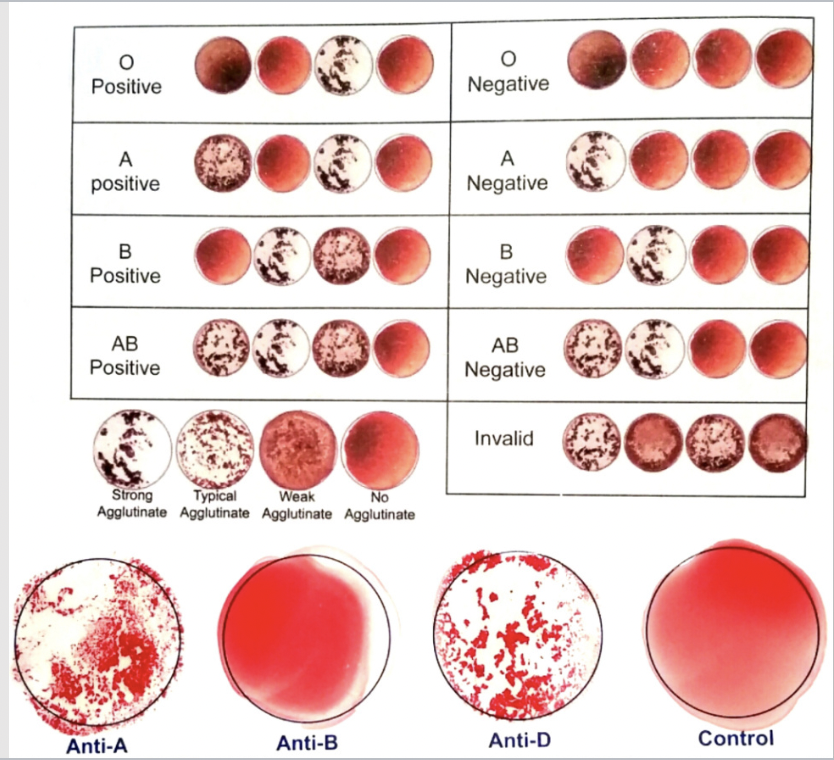
24
New cards
How does evolution occur? 5
mechanisms:
mechanisms:
1) Genetic Mutations
2) Migration (emi-/immi- gration)
3) Genetic Drift
4) Natural Selection
5) Sexual Selection
2) Migration (emi-/immi- gration)
3) Genetic Drift
4) Natural Selection
5) Sexual Selection
25
New cards
1) Genetic Mutations
•Ex: Sickle Cell Anemia: Can cause blood clots, but also protects against malaria so it has been maintained in the human population.
26
New cards
2) Migration
when populations migrate to new regions they can change the allele frequencies of the populations they leave, and the populations they enter.
27
New cards
3) Genetic Drift
Population drifts towards one allele becoming more common because of random events such as bottlenecks or natural events like earthquakes.
28
New cards
4) Natural Selection
organisms better adapted to their environment tend to survive and produce more offspring, therefore conserving favorable traits.
29
New cards
5) Sexual Selection
natural selection arising through preference by one sex for certain characteristics in individuals of the other sex. Non-random mating
30
New cards
Convergent Evolution
- Occurs when two independent taxa (organisms) evolve the same or a similar trait independently of one another.
- Species that resemble each other often independently evolved their similar traits as a result of having to adapt to similar environments or ecological niches.
- Evidence of C.E. = Analogous Structures
- Species that resemble each other often independently evolved their similar traits as a result of having to adapt to similar environments or ecological niches.
- Evidence of C.E. = Analogous Structures
31
New cards
Divergent Evolution
- The process by which a species evolves into two or more descendant or different forms
- Evidence of D.E. = Homologous Structures
- Evidence of D.E. = Homologous Structures
32
New cards
Photosynthesis
• What is it: Photosynthesis is an energy capturing process
• Who does it: Plants, some bacteria, and some other unicellular
organisms (mostly Eukaryotic cells)
- Plants capture the light energy from the sun, transform that energy into chemical energy and store it within sugar molecules. (aka they are autotrophs!)
• Who does it: Plants, some bacteria, and some other unicellular
organisms (mostly Eukaryotic cells)
- Plants capture the light energy from the sun, transform that energy into chemical energy and store it within sugar molecules. (aka they are autotrophs!)
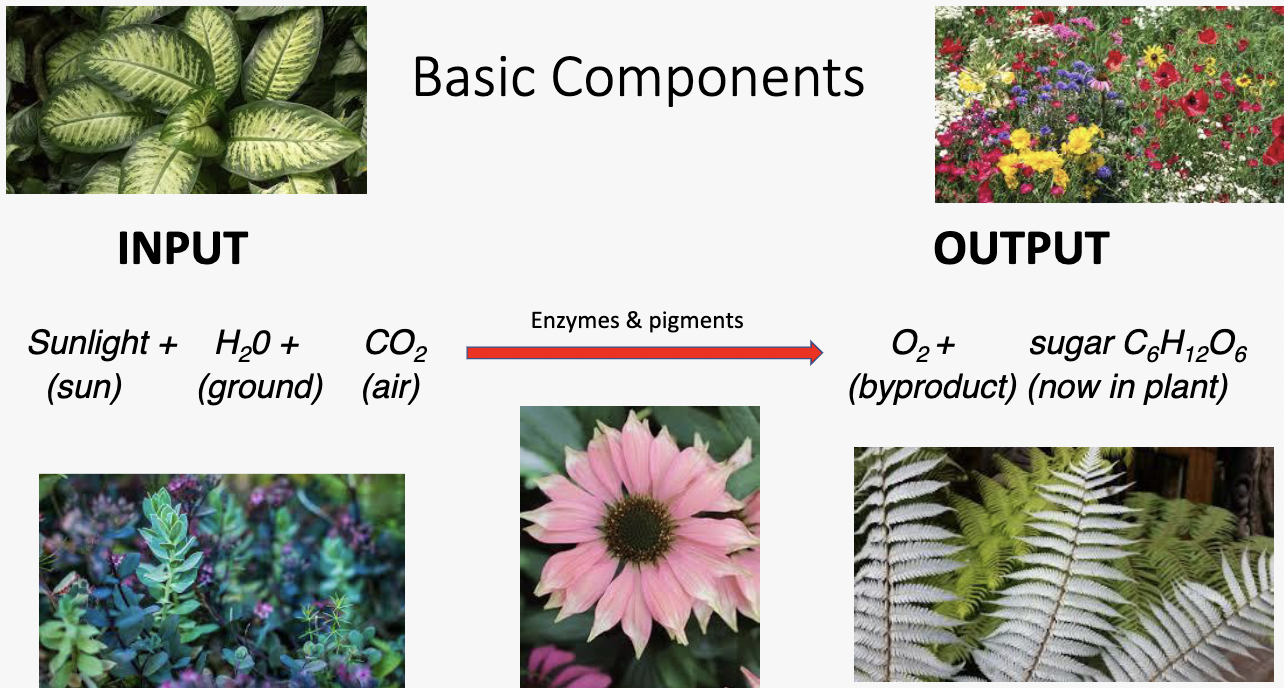
33
New cards
Chloroplasts
- The organellewhere the process of photosynthesis occurs
(in plants and eukaryotic algae, etc.)
(in plants and eukaryotic algae, etc.)
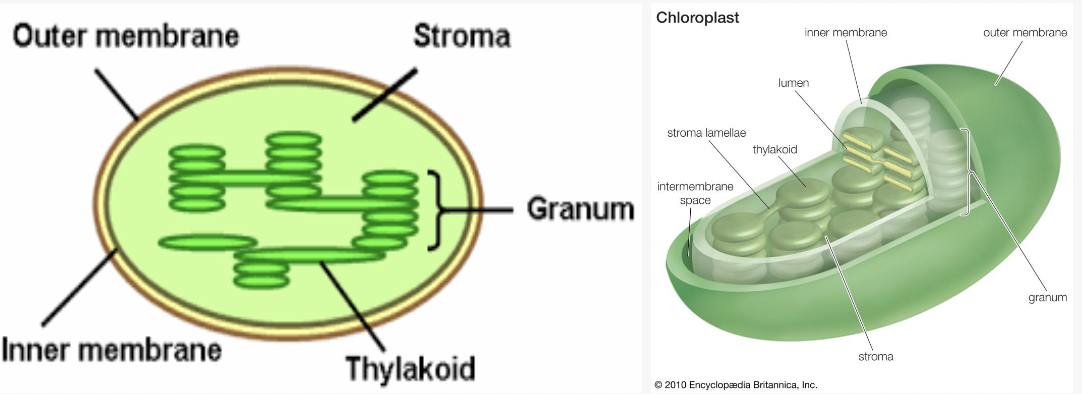
34
New cards
PART 1 of photosynthesis
Photo segment
• Light captured, temporarily stored in energy storage molecules
• Water splits and forms Oxygen
• OCCURS in thylakoid membranes (in plants)
• Light captured, temporarily stored in energy storage molecules
• Water splits and forms Oxygen
• OCCURS in thylakoid membranes (in plants)
35
New cards
PART 2 of photosynthesis
• Sugar or glucose is made
• OCCURS in stroma of the chloroplast-fluid filled sac
• OCCURS in stroma of the chloroplast-fluid filled sac
36
New cards
What is Chlorophyll?
- Chlorophyll-Green pigment found in plants
- Responsible for the absorption of light to provide energy
for photosynthesis
- Responsible for the absorption of light to provide energy
for photosynthesis
37
New cards
Electromagnetic Spectrum
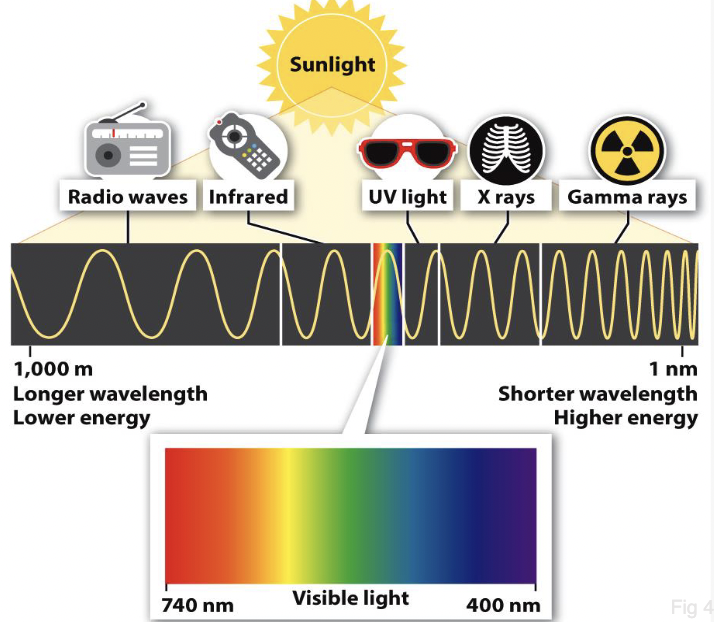
38
New cards
Energy of Wavelengths (nm)
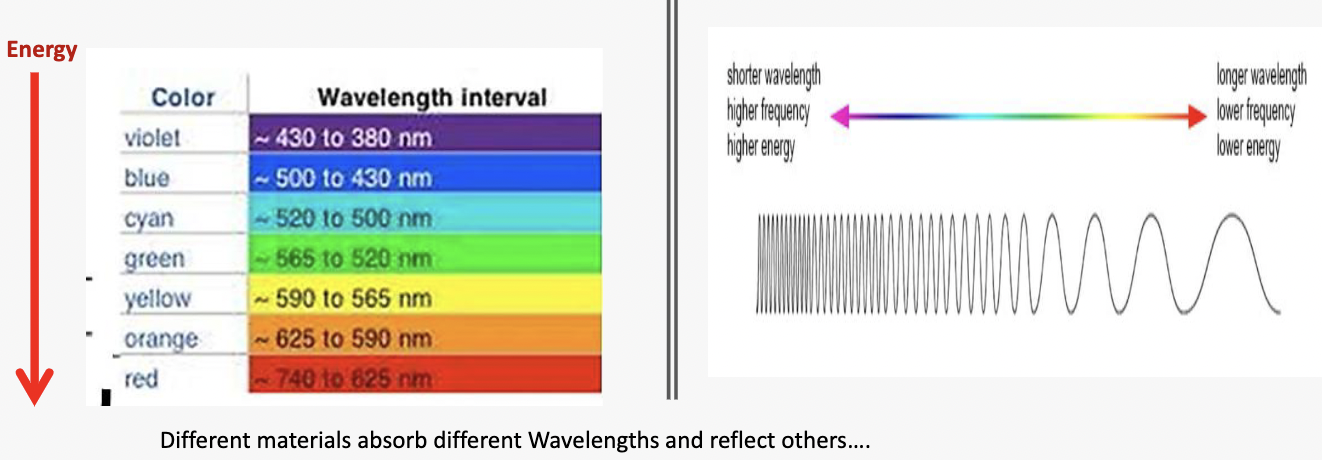
39
New cards
Diagram of Leaf Cell
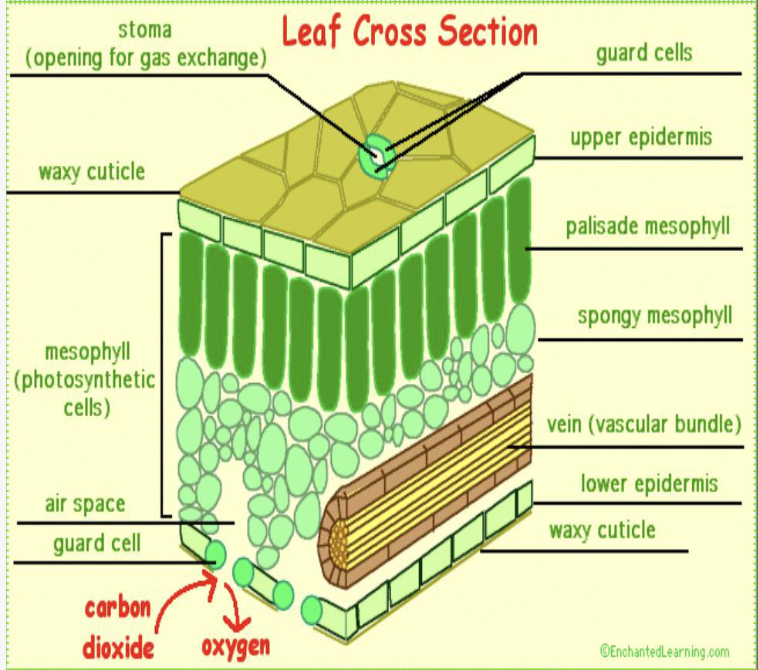
40
New cards
Ecology
The study of how organisms interact with each other and the physical and chemical features of their environment
41
New cards
Ecological Community
- A naturally occurring group of native plants, animals, and other organisms that are interacting in a unique habitat.
• Different environments have different abiotic factors that influence what kinds of organisms can survive there
• What are some abiotic factors you can think of?
• Different environments have different abiotic factors that influence what kinds of organisms can survive there
• What are some abiotic factors you can think of?
42
New cards
Different environments have
different...
different...
- abiotic factors (access to water, sunlight, temperatures,
mineral availability + pH, slope, wind)
- This can lead to dramatic differences in species
composition (leading to different types of communities
mineral availability + pH, slope, wind)
- This can lead to dramatic differences in species
composition (leading to different types of communities
43
New cards
South-facing slopes receive more...
direct sunlight from the sun in the northern hemisphere.
- North: Less Sunlight = more water
- South: More sunlight = less water
- North: Less Sunlight = more water
- South: More sunlight = less water
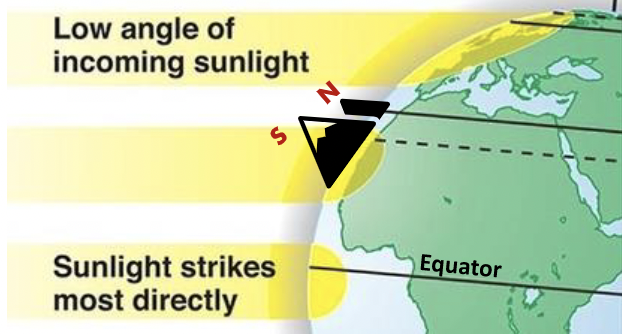
44
New cards
Topographic Effects: Rain shadows
Large Mountains cause a Rain shadow effect
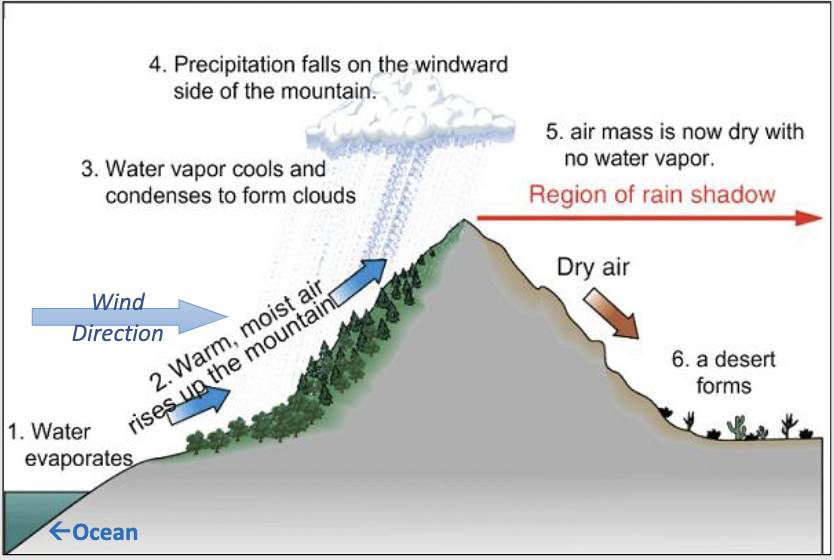
45
New cards
Riparian Community
- near a (flowing) water source
- Plants here –have high water requirements
- Plants here –have high water requirements
46
New cards
Rocky Outcrops
- Soils with poor water retention, sometimes low essential nutrients concentrations (K, N, P)
- Serpentine outcrops –high in heavy metals
- Plants Here:Drought tolerant and adapted to harsh soils
- Serpentine outcrops –high in heavy metals
- Plants Here:Drought tolerant and adapted to harsh soils
47
New cards
Coastal Scrub/ Chaparral
• Shaped by Mediterranean Climate of CA
• Not dry enough to be desert, not wet enough to support full sized trees of a forest
Plants Here:
• Can survive on low rainfall
• “soft chaparral” or “coastal scrub” plants can absorb moisture from fog
• Not dry enough to be desert, not wet enough to support full sized trees of a forest
Plants Here:
• Can survive on low rainfall
• “soft chaparral” or “coastal scrub” plants can absorb moisture from fog
48
New cards
Grassland
• Low Water Availability
Plants Here:
• Can survive on low rainfall
• “soft chaparral” or “coastal scrub” plants can absorb
moisture from fog
Plants Here:
• Can survive on low rainfall
• “soft chaparral” or “coastal scrub” plants can absorb
moisture from fog
49
New cards
Species Types
- Native: Species that evolved in the region
- Non-Native: Species that evolved in another region and were transported here (by people or other plants/animals, on purpose or by accident) relatively recently
• Invasive: Non-natives that are negatively impacting or
outcompeting native species
- Non-Native: Species that evolved in another region and were transported here (by people or other plants/animals, on purpose or by accident) relatively recently
• Invasive: Non-natives that are negatively impacting or
outcompeting native species